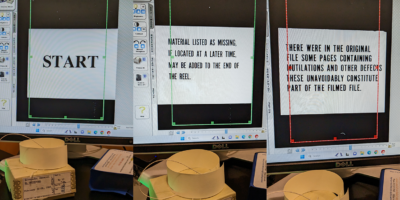By Jonathan Kwan and Iris Strangmann
Though every class is different, each generally entails a spectrum of student participators, from the very talkative to the somewhat talkative, to the completely silent. Building on our conversations and experiences as a part of the TLC’s Open Teaching Initiative, we ask in this post whether teachers should require verbal participation from the entire class, including those not inclined to speak, and whether, and how, a teacher should go about calling on students who don’t regularly participate.
Although we recognize that there are different responses to this question, we also realized during the course of our post-observation conversation that we shared an approach. Our answer is: Yes. You should require verbal participation. In some cases, you’re actually grading classroom participation (which likely includes verbal participation as a component), but even in the cases when you’re not grading verbal participation, we argue that you require it anyway. Why? For three reasons:
- A question from you to a student is an opportunity to measure the student’s understanding on a given topic. You probably have a better impression of the verbal students’ capacities, so calling on the quieter students is a strategy to find out how they’re doing.
- Quantitatively speaking, more contributions lead to more classroom dialogue and more classroom involvement. Naturally, the quality of someone’s contribution may vary, but that’s okay since they’re students and they’re learning.
- Perhaps the most important thing: Public speaking, and being able to voice your opinion, is a skill that is valuable and often necessary in many professional contexts. Though it may be separate from the actual content you as a teacher are teaching, we think it’s our job as educators to foster those professional development skills as well.
There are, of course, some disadvantages to soliciting participation from students who otherwise would not voluntarily participate. First, some students may have social anxiety about sharing their ideas in front of the whole class. Calling on them may just enhance that anxiety and be counterproductive for their learning. Second, there may be opportunity costs to calling on students who have not volunteered to share. Perhaps they do not have a thoughtful contribution ready and another student who is volunteering to share does. Class time, as we all know, is a valuable and limited resource. Third, ultimately teachers cannot force students to participate. Students may simply not want to contribute to class conversation at a given time.
After sharing the pros and cons of requiring participation, we’d now like to share some tips on how to get people to participate to avoid those painful and seemingly infinite silences (even though, of course, dwelling in awkward silence can sometimes be pedagogically useful). In our experience, these tips help to leverage the advantages of requiring participation while avoiding (or at least diminishing) the disadvantages.
Encouraging participation and lessening social anxiety comes mainly down on one thing: preparation time. One strategy that gives students some time to prepare being called upon is just simply pattern calling (working front-to-back or left-to-right). Announce this strategy to them and they know that they’re up in 1, 2, or 3 rounds. Yes, the real shy ones may be counting down until it’s their turn, but this will give them time to prepare for speaking in general, and potentially the content of their contribution as well. Of course, the first students that you call on will not have as much opportunity to prepare their contributions, but you can vary the place in the room from where you start pattern calling so that the same students are not always called on first.
A second strategy (which can be combined with the first) is to have students complete an activity before calling on them. One possibility is to have students do some freewriting and to let them know that they may be called on to share their thoughts. In this way, students won’t have to improvise or speak off the cuff; they need only read what they wrote.
Another possibility is to have students first discuss a particular question or topic in smaller groups or pairs. Students who are more reticent to share their thoughts in front of the entire class may feel more comfortable speaking to a few of their peers. After smaller group discussions, you can reconvene the class as a whole to facilitate a whole-class discussion and call on students to share what their group discussed. Students can report what happened in their group and won’t have to defend a particular position or even share their own opinion. This kind of expository participation with less personal investment at stake may induce less anxiety for some students.
By employing strategies that give students preparation time before sharing their ideas, teachers can facilitate thoughtful contributions while lessening student anxiety about public speaking. When we have used some of these strategies in our own classrooms, we have found that they did in fact help to promote discussion and were less intimidating to students than simply calling on them out of the blue. Regularly using these strategies can also help to shape the classroom culture and to set the expectation that students are co-creators of the classroom. In our experiences, courses in which we have intentionally implemented these strategies generally have a more inclusive, open, and collaborative dynamic. Hopefully, students will come to see participation not simply as a requirement imposed from on high, but an opportunity to contribute their own voice as a valuable member of the classroom.
Jonathan Kwan is a doctoral student in Philosophy at the Graduate Center; as of Fall 2017, he will be a CUNY Humanities Alliance teaching fellow. Iris Strangmann is a doctoral student in the Speech-Language-Hearing Sciences program at the Graduate Center.









1 Pingback